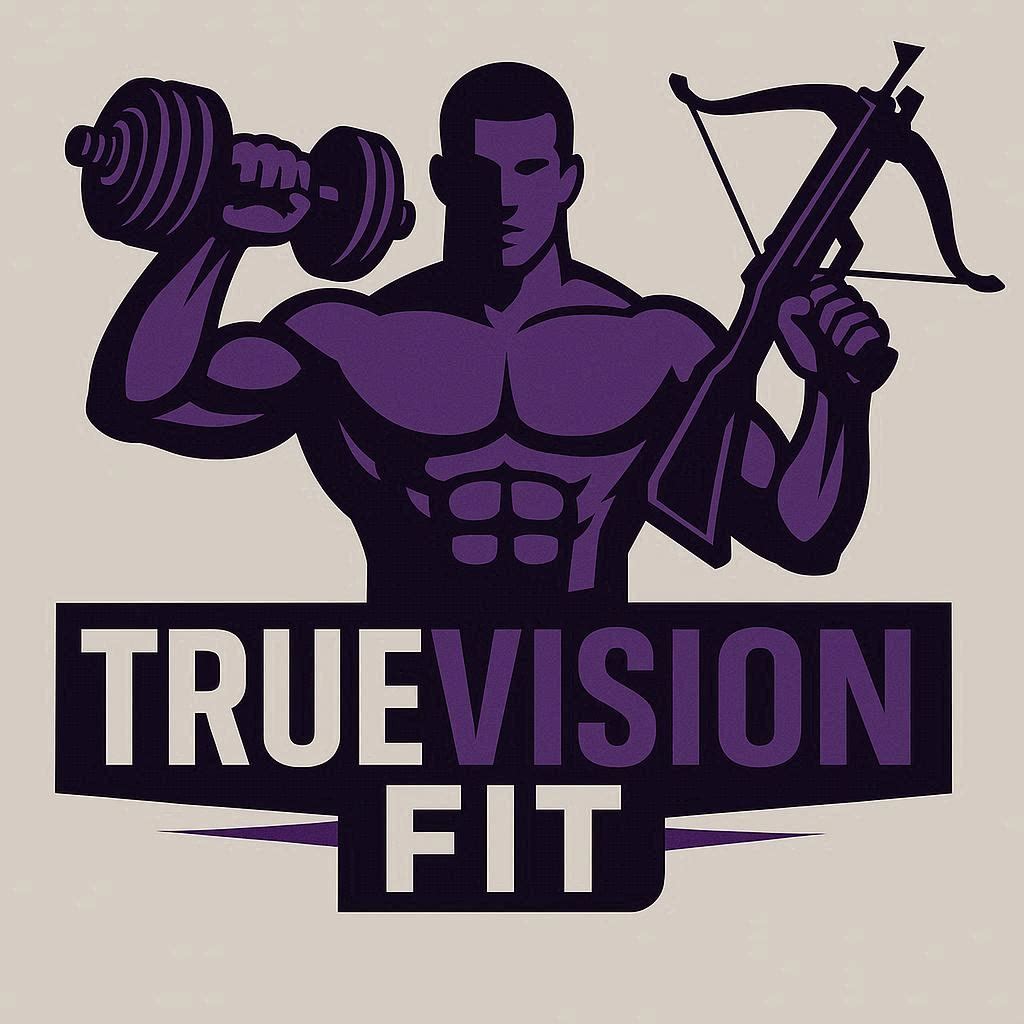 A visiondriven fitness plan isn’t just another approach for staying motivated at the gym. It’s a way to turn your workouts into something that fits right into the bigger priorities of your life, your purpose, your identity, and what you actually value. When you tie your training to who you want to be and what you want out of life, exercise stops feeling like a neverending struggle for willpower and becomes part of your personal adventure.
A visiondriven fitness plan isn’t just another approach for staying motivated at the gym. It’s a way to turn your workouts into something that fits right into the bigger priorities of your life, your purpose, your identity, and what you actually value. When you tie your training to who you want to be and what you want out of life, exercise stops feeling like a neverending struggle for willpower and becomes part of your personal adventure.
If you’re tired of chasing motivation only to fall off the wagon when things get tough, it’s worth checking out how a visiondriven fitness plan can help you create real consistency. I’m going to walk you through a stepbystep blueprint for making this work, using my experience coaching people through the TrueVisionFit approach. This framework is about linking fitness to your life so you feel like you’re moving forward both physically and personally—making health part of your greater story, rather than just another box to check.
Step 1: Identify Your Top 3 Life Priorities
Most workout plans ask, “What’s your fitness goal? but here, I switch that up. I like to start by asking myself, “What matters most to me in life right now? This might sound heavy, but the answer is usually pretty simple: family, career, adventure, health, impact—whatever truly fires you up.
Questions to Help You Get Clear:
- What do I want to be able to do for the next 5-10 years?
- When I picture the best version of me, what am I able to enjoy, create, or achieve?
- Whose life do I want to impact, and how does my health play into that?
It helps to get these down on paper. For me, my priorities have mixed things up over time. When my kids were little, energy and patience were the dream. Later, I wanted to run a 10K with my friends. There’s no right or wrong answer, just what feels real to you.
Step 2: Map Each Priority to a Fitness Goal
This is where things get practical. I match each big life priority to a clear fitness outcome. The trick is making these outcomes about what I can DO, not just how I look.
- If your priority is being present for your family, your fitness focus might be boosting your daily energy and preventing burnout.
- If adventure and travel are your thing, building functional strength and stamina should lead your plan.
- For career growth, it could be about stress management and hitting peak focus throughout the day.
Fitness Goal Examples Based on Priorities:
- “I want to hike with my kids every weekend. No problem, no pain.”
- “I want to have the stamina for long workdays and still have energy for hobbies.”
- “I want to run a charity 5K in three months to support a cause I care about.”
Getting this alignment right makes your workout time feel purposeful, not just another obligation on your todo list. When you feel your efforts attach to real outcomes, sticking with it becomes much more natural.
Step 3: Build a Weekly Workout Plan Grounded in Purpose
With your priorities and outcomes clear, you can start building a routine around what you genuinely care about, not just burning calories or looking good for Instagram. I keep my routines connected to my main goals, so every session feels like progress toward the bigger picture.
Design Steps:
- Choose 2-4 main activities that move you closer to your mapped fitness outcomes (examples: strength for carrying gear, yoga for stress relief, cardio for stamina).
- Schedule workouts at times that actually fit into your real life. Consistency is way easier when you don’t have to battle your schedule every week.
- Add variety by tying workouts to your values. If you love the outdoors, swap the treadmill for a hike.
Example Week for “Family & Adventure” Vision:
- Monday/Wednesday: 30 minutes of strength training (helps carry kids, groceries, or luggage!)
- Friday: 45minute nature walk or hike
- Saturday: Group activity (bike ride, family soccer at the park)
Making workouts a part of living out your values means you’re way more likely to stick with them, even when you’re busy or tired.
Step 4: Motivation vs. Identity – Why Vision Beats Willpower
Motivation is notorious for coming and going. Relying on it for longterm consistency usually backfires. One bad week, and the habit train goes off the rails. What I see working much better is when people tie their training to their sense of identity. When you see yourself as someone who values health, adventure, or being a strong role model—not just someone who “should work out”—actions follow much more naturally.
Quick Identity CheckIn:
- Instead of “I want to be motivated,” try asking yourself “Who am I becoming because of these workouts?”
- Remind yourself after each workout: “This is what someone who cares about purpose does.”
Building identity takes repetition, but it’s far more reliable than waiting for a spark of inspiration. It rewires your thoughts until movement is something you expect from yourself—no matter the mood or the day.
Step 5: Anchor Workouts to Personal Values

It’s super important to line up your training with your deepest values. Most people slip up because they’re following trends or trying to look a certain way for others, not for themselves. I always check in with my own values when I feel offtrack. Knowing what you stand for changes whether you show up or phone it in, especially when those first bursts of excitement fade.
How to Identify Your Core Fitness Values:
- Write down a list of words you want to describe your life (strong, vibrant, fun, balanced, resilient, present…)
- Circle the top three that really stick with you.
- When you’re making workout plans, ask if what you’re doing helps you live out at least one of those values.
This process turns your fitness plan into something that works for you, not for Instagram or the latest trends. It makes your effort sustainable because you see the “why” behind every session—you’re building more than muscle, you’re building your best self.
Step 6: Create VisionDriven MicroHabits
Big shifts happen because of small, consistent actions. I like to create micro-habits, tiny daily practices that match my identity and vision. Each micro-habit is easy to do, super specific, and shows you that progress is always possible, even on the busiest days.
3 Fitness Identity Traits & MicroActions:
- Resilient: Do 10 squats when you feel tired before work.
- Focused: Set a timer for 5 minutes of mindful stretching each night.
- Strong: Carry groceries with good posture and intent. Like mini strength training.
How to Track and Reflect:
- Use a simple journal to check off your daily actions.
- Every week, write one sentence on how these choices made you feel or connect to your bigger vision.
These small actions turn consistency from a chore into a part of your evolving story. Over time, microactions add up to real progress. Don’t underestimate the compound effect of doing little things regularly. Those simple choices can totally reshape your fitness outlook over weeks and months.
Bonus: 90Day Vision Challenge

I’ve seen amazing changes from people who commit to a short, clear window of living out this approach. Here’s a fast challenge you can jump on:
- Define your top vision for the next 90 days (one area of life + your big fitness why).
- Design 2-4 weekly workouts that match that vision.
- Choose three microhabits, one for each identity trait.
- Reflect and adjust every 30 days. What’s working, what feels meaningful, and where you can improve?
If you want to keep yourself on track, simple tools like habit-tracking apps or a daily journal can make a real difference. Even a basic printable worksheet can help you put your vision down and see your progress. Check online communities or fitness groups for free templates—you’ll find plenty that match your style.
Common Questions & Quick Fixes
What if I don’t know my true priorities?
Try asking yourself, “Where do I naturally put my energy when I’m happiest?” or “What do I miss most when I don’t have time for it?” Sometimes, our strongest priorities show in what we daydream about or regret missing.
I keep falling off my plan. What now?
- Go back to your vision. Remind yourself why this matters to you.
- Start with just one microhabit for the week and build from there.
- It’s totally normal to adjust as life changes. Flexibility is part of the process.
Do I need supplements or fancy trackers?
They can be helpful if they make you feel supported or excited, but your vision comes first. If tools help you stay on track, that’s great. Just make sure they fit your actual needs, not someone else’s checklist. Sometimes, the best fitness tool is simply a notepad and your own curiosity about what works for you.
Your Next Step: Put Vision at the Center
Building a visiondriven fitness plan changes the focus from trying to “stay motivated” to actually living out your values through movement. When you make fitness about becoming the person you want to be, sticking to your routine feels much more natural—like something you own, not something forced.
Quick Action Plan:
- Write down your top 3 life priorities tonight.
- Connect each one to a practical fitness goal or habit.
- Build your week around activities that fit your vision, and start tracking one microhabit today.
When fitness is part of your bigger story, every workout is a step toward who you want to become. If you want the TrueVisionFit worksheet or more tips, just check in—it’s all about building a plan that works for your real life. Remember, your adventure to health is unique, and tying your training to your vision is the key to lasting change.
